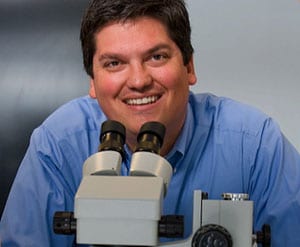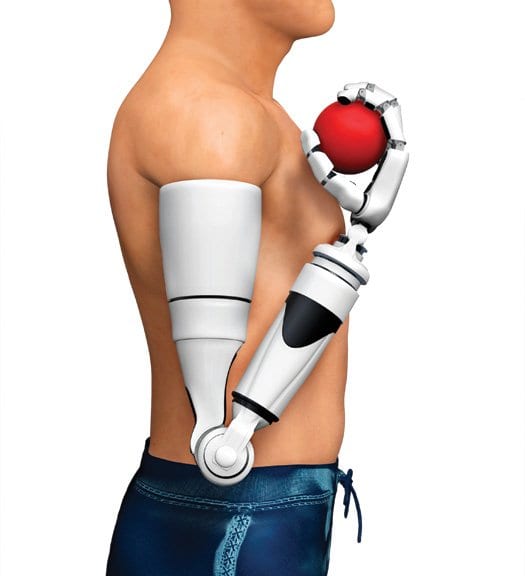Reporter Katie Drummond with Wired magazine has covered the research of SMU engineers Marc Christensen and Volkan Otugen who are working as part of a consortium with industry and other universities to develop technology that will someday help amputees have “feeling” in their artificial limbs.
The research is funded through a $5.6 million grant from the U.S. Department of Defense and industry for a center led by SMU’s Lyle School of Engineering. The goal is to develop revolutionary technology for advanced prosthetic limbs that will help amputees returning from war in Iraq and Afghanistan.
Two-way fiber optic communication between prosthetic limbs and peripheral nerves will be key to operating realistic robotic arms, legs and hands that not only move like the real thing, but also “feel” sensations like pressure and heat.
Wired’s coverage published Nov. 3 in Drummond’s “Danger Room” column.
EXCERPT:
By Katie Drummond
Wired
The Pentagon’s already got brain-controlled prosthetics, and they are a major improvement over old-school artificial limbs. The devices are far from perfect, however. They rely on metal implants, which aren’t compatible with the body’s tissues, and they can only transmit a few signals at a time — turning what should be a simple movement into a Herculean task.Now, Darpa-funded researchers are convinced they’ve found a way to make prosthetics truly life-like: laser beams.
A team led by experts at Southern Methodist University is making swift progress towards prosthetic devices that rely on fiber-optics, and would offer a wearer the kind of seamless movement and sensation experienced with a flesh-and-blood limb.
“Already, we’re tantalizingly close,” Dr. Marc Christensen, the program’s leader, tells Danger Room. “We haven’t seen anything that’s been a deal-breaker yet.”
It all started in 2005, when researchers at Vanderbilt realized they could trigger a nerve using infrared light. The finding catalyzed a handful of research projects investigating the prospect of laser-powered prostheses, and Darpa last year doled out $5.6 million for the creation of the Neurophotonics Research Center, led by SMU, for the development of prosthetic devices powered by infrared lasers.
SMU is a nationally ranked private university in Dallas founded 100 years ago. Today, SMU enrolls nearly 11,000 students who benefit from the academic opportunities and international reach of seven degree-granting schools. For more information see www.smu.edu.
SMU has an uplink facility located on campus for live TV, radio, or online interviews. To speak with an SMU expert or book an SMU guest in the studio, call SMU News & Communications at 214-768-7650.
 To book a live or taped interview with Marc Christensen and Volkan Otugen in the SMU
To book a live or taped interview with Marc Christensen and Volkan Otugen in the SMU 
 SMU to help solve dangerous refugee water issues
SMU to help solve dangerous refugee water issues Anthropology researcher to study human-fire-climate interactions
Anthropology researcher to study human-fire-climate interactions






